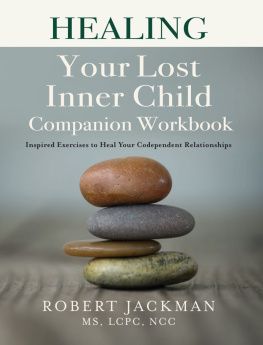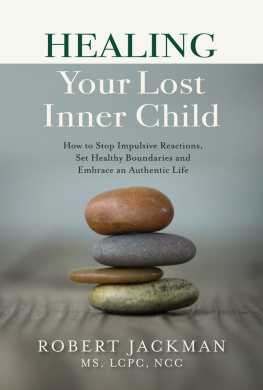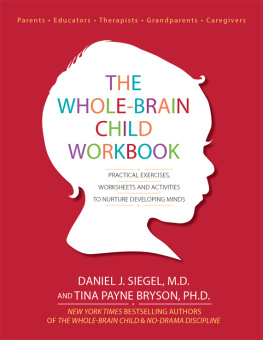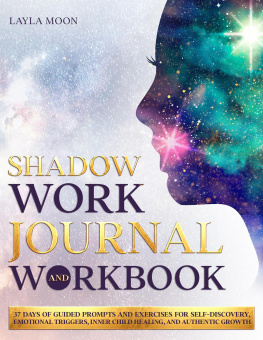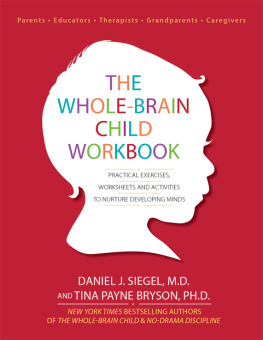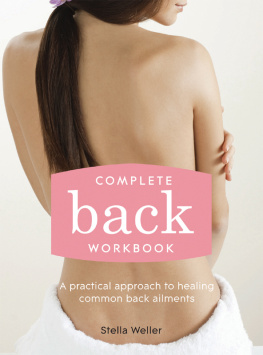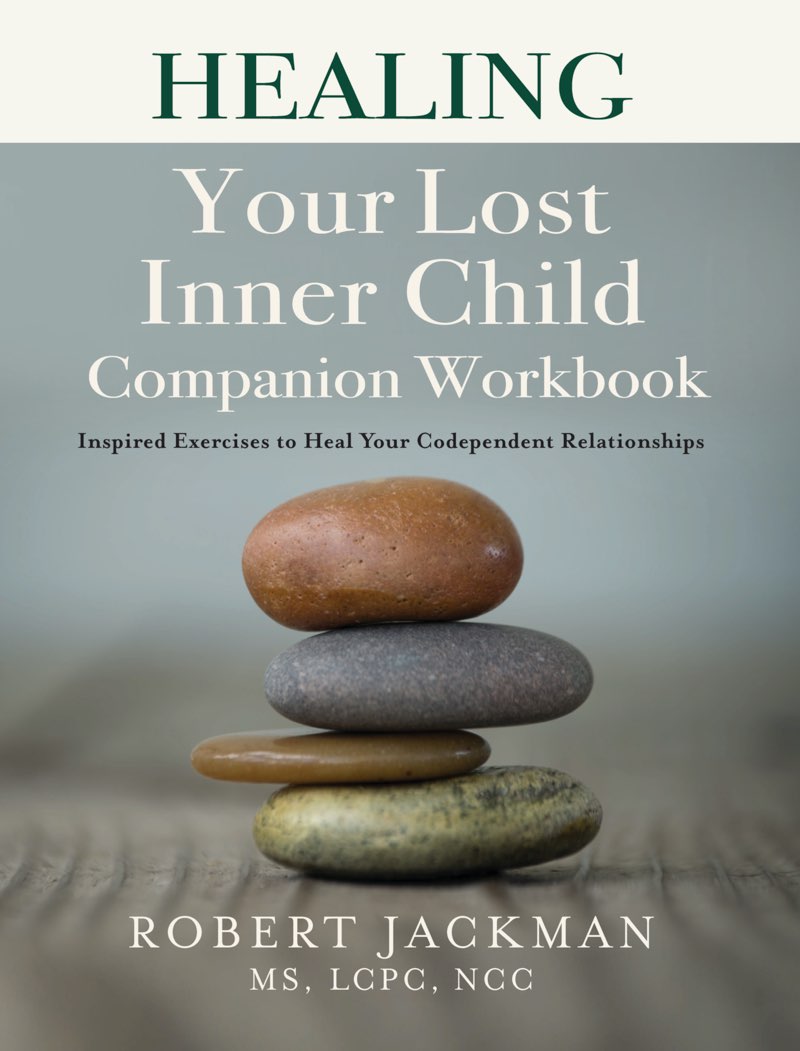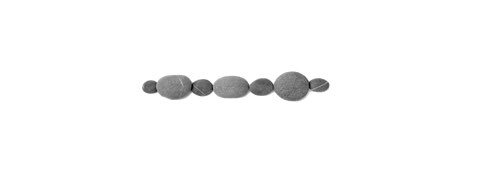Healing Your Lost Inner Child Companion Workbook: Inspired Exercises to Heal Your Codependent Relationships
Copyright 2020 by Robert Jackman, LCPC
All rights reserved.
No part of this publication may be reproduced, distributed, or transmitted in any form or by any means, including photocopying, recording, or other electronic or mechanical methods, without the prior written permission of the author, except in the case of brief quotations embodied in critical reviews and certain other noncommercial uses permitted by copyright law.
ISBN (paperback): 978-1-7354445-2-9
ISBN (ebook): 978-1-7354445-3-6
The author may be reached through his website at www.theartofpracticalwisdom.com
Edited by Jessica Vineyard, Red Letter Editing, LLC,
www.redletterediting.com
Book Design by Christy Collins, Constellation Book Services
Published by Practical Wisdom Press
In the book Healing Your Lost Inner Child, you learned that inner child work is a reconnection with the unhealed part of you that keeps showing up and playing out the same dramas until it is acknowledged and healed. This rejoining is an opportunity for you to go within and form a heartfelt connection with the lost inner child, which holds a great treasure: your unhealed emotional pain. When you give this part a voice, it softens and reveals your core wounding, illustrating how you got to this place. The lost inner child is deep inside, waiting patiently to give you answers that will help you better understand yourself and your wisdom.
To become a conscious creator in your life you need to heal and move away from the impulsive reactivity of the lost inner child. The HEAL processHealing and Embracing an Authentic Lifeis a road map on your journey of discovery toward healing this part of you.
This companion workbook will help you to continue the hard work you did while working through the book. The exercises in this workbook will help you to develop an even deeper healing connection with your lost inner child. All of the exercises and examples are based on the core concepts described in the book, and while you can use this workbook independently from reading the book, you will receive a deeper level of healing if you know the core concepts and have gone through the HEAL process.
This workbook is designed to help you create a deeper understanding of the character and voice of your inner child so that you can clearly understand when, where, and how your wounded part shows up. These are your wounded emotional response tools, such as avoiding, lying, ignoring, and being passive-aggressive. Once you understand when and how that wounded codependent part presents itself in your day-to-day life, you will be able to make clearer decisions based on this greater understanding.
How to Use this Workbook
Part I has the same exercises in the same order as each chapter in the book. If you have purchased the workbook along with the book, you can do all of the exercises here instead of using a separate notebook. If you have already completed the book and exercises separately, you may consider doing them a second time in the workbook to see if you answer the questions in the same way today as you did when you started your healing journey.
Part II has all new material not found in the book, and will help you to go to a deeper level within by expanding on the knowledge and insights you gained from the book. Some of the exercises in Part II are variations of the exercises, lists, and letters you completed in the book. There are more examples of inner child work, codependency, and boundary setting in relationships and at work. You will also learn to develop a self-nurturing plan. As you explore Part II, you will find a lot of new material to help you understand your inner child more comprehensively.
As you go through the workbook, use intentional thought as you complete the exercises, but dont overthink your answers. Often your first instinct is how you really feel.
The fill-in-the-blank exercises are meant to help you gain insights into how you think and feel about a certain subject at that moment in time. These exercises will not give you answers for what to do for these issues, but rather, they will help you to develop a deeper introspection of yourself. As you go through the workbook, you may find that you start to remember more from your past that you may want to explore. You now have the tools to do so, and you can include your new insights and thoughts into the steps of the HEAL process to help you gain insights and healing. It will help your progress if you have a separate notebook to record your answers.
Much of therapy work is about teaching introspection, and the exercises in Part II are designed to help you answer on your own the questions that a therapist may ask in a psychotherapy session. You can choose which exercises speak to you at the given moment. The exercises are about creating an understanding within yourself, and to learn to love, respect, and honor yourself as you were authentically aligned at birth.
It is not easy to do this work, but once you have worked through your issues, you will surely feel better. Living life, being in relationships, and doing your lifes work becomes easier. This sense of emotional freedom takes focused effort and a level of commitment. You are continuing on a great journey of self-discovery. Enjoy the journey, and remember to be gentle with yourself throughout the process. Get ready for some aha moments!
We have to get out of our heads and into our hearts to heal and remember.
Feelings Chart
Being able to identify a word that most fittingly describes how you feel in the moment is a great gift. When you use the best word you can think of to describe a feeling you are experiencing, you can relax in the recognition that you are linking up your feelings with your conscious expression. You are attuning yourself to your true nature, using your words to find agency within, and recognizing that, yes, this is how you are feeling right now.
As you are doing this work, refer to the Feelings Chart in table 1, created by the Center for Nonviolent Communication. Notice that feeling words are put into two categories: when your needs are satisfied and when they are not met. The words represent feelings of emotional states and physical sensations that you want to express. This list is meant as a guide. As you progress, you may have some words of your own that you would like to add to the chart.
Needs Inventory
Needs are an essential part of our lives. Our needs are things that are necessary for us to live and as you will see, they represent much more than just food, clothing and shelter. Needs are not luxuries, they are what fulfill our sense of self worth and esteem at a deep fundamental level. Identifying your needs will help you understand yourself better and you will be able to communicate more clearly your needs to others. Needs will take you into a deeper connection with yourself and they are different from wants. Wants are things or aspects that are fleeting or things of desire that do not have lasting value.

